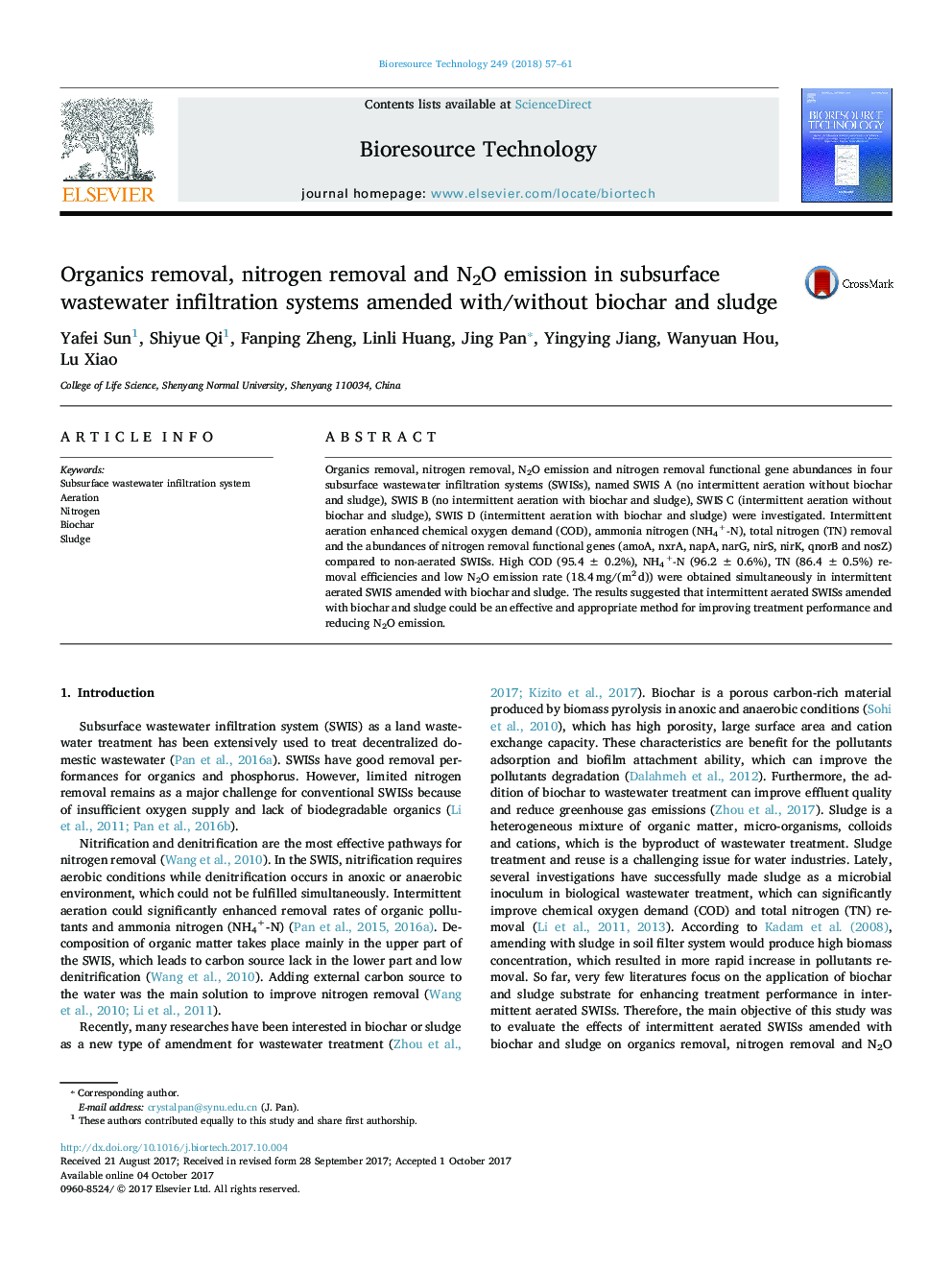| Article ID | Journal | Published Year | Pages | File Type |
|---|---|---|---|---|
| 4996427 | Bioresource Technology | 2018 | 5 Pages |
Abstract
Organics removal, nitrogen removal, N2O emission and nitrogen removal functional gene abundances in four subsurface wastewater infiltration systems (SWISs), named SWIS A (no intermittent aeration without biochar and sludge), SWIS B (no intermittent aeration with biochar and sludge), SWIS C (intermittent aeration without biochar and sludge), SWIS D (intermittent aeration with biochar and sludge) were investigated. Intermittent aeration enhanced chemical oxygen demand (COD), ammonia nitrogen (NH4+-N), total nitrogen (TN) removal and the abundances of nitrogen removal functional genes (amoA, nxrA, napA, narG, nirS, nirK, qnorB and nosZ) compared to non-aerated SWISs. High COD (95.4â¯Â±â¯0.2%), NH4+-N (96.2â¯Â±â¯0.6%), TN (86.4â¯Â±â¯0.5%) removal efficiencies and low N2O emission rate (18.4â¯mg/(m2â¯d)) were obtained simultaneously in intermittent aerated SWIS amended with biochar and sludge. The results suggested that intermittent aerated SWISs amended with biochar and sludge could be an effective and appropriate method for improving treatment performance and reducing N2O emission.
Related Topics
Physical Sciences and Engineering
Chemical Engineering
Process Chemistry and Technology
Authors
Yafei Sun, Shiyue Qi, Fanping Zheng, Linli Huang, Jing Pan, Yingying Jiang, Wanyuan Hou, Lu Xiao,
